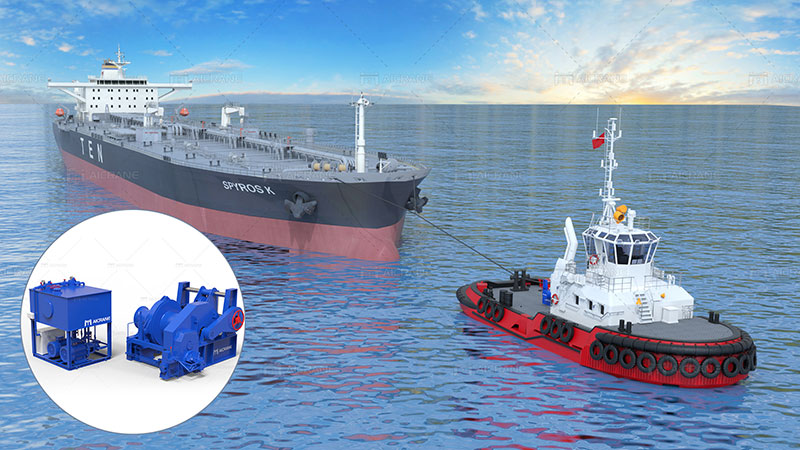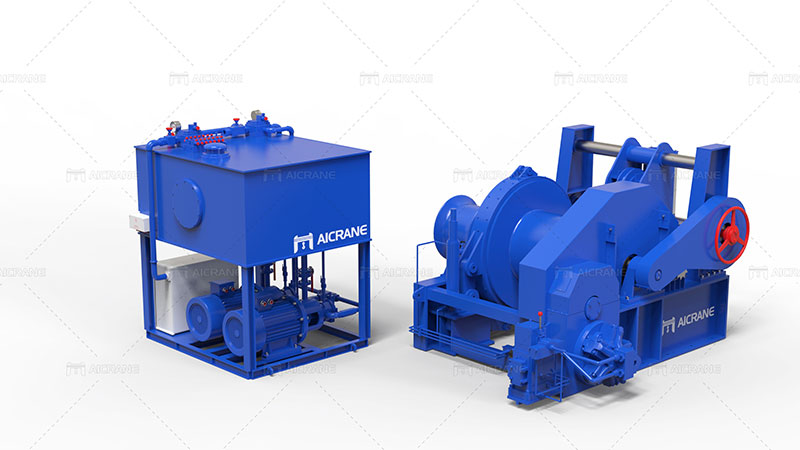Tugger winches play a pivotal role in various industries, from construction and manufacturing to logistics and agriculture. These powerful machines are designed to move heavy loads efficiently, making them indispensable for businesses that rely on material handling. When considering the purchase of a tugger winch, price is a critical factor. However, it’s essential to strike a balance between cost and value to ensure that you’re investing in the right equipment for your specific needs.
In this article, we’ll delve into the various factors that influence tugger winch prices and offer insights into how you can make an informed decision when acquiring this equipment.

1. Tugger Winch Types and Features
Before delving into pricing considerations, it’s crucial to understand the different types of tugger winches available in the market and the features they offer. Tugger winches come in various configurations, including electric, hydraulic, and pneumatic, each with its own set of advantages and disadvantages.
Electric tugger winches are known for their efficiency and ease of use. They are often preferred for indoor applications due to their relatively low noise levels and minimal emissions. On the other hand, hydraulic tugger winches are favored for their high power output and durability, making them suitable for heavy-duty outdoor tasks. Pneumatic tugger winches are versatile and suitable for applications where electricity or hydraulic power sources are limited.
The features of a tugger winch also influence its price. These features can include load capacity, line speed, drum size, and control options. It’s essential to assess your specific needs and choose a tugger winch that aligns with your requirements to avoid overpaying for features you won’t use.
2. Load Capacity and Duty Cycle
One of the most significant factors impacting tugger winch prices is load capacity. Tugger winches are available in a wide range of load capacities, from a few hundred pounds to several tons. The price of a tugger winch increases significantly as its load capacity goes up. Therefore, it’s essential to determine the maximum load you’ll be handling regularly and select a winch that can handle that capacity safely.
Additionally, consider the duty cycle of the tugger winch. The duty cycle refers to the amount of time the winch can operate continuously without overheating or experiencing performance issues. Winches with higher duty cycles tend to be more expensive. For applications that require continuous and heavy use, investing in a marine winch with a higher duty cycle is a wise choice to ensure reliability and longevity.
3. Brand Reputation and Quality
Brand reputation and product quality also play a significant role in tugger winch pricing. Established and reputable brands often command higher prices for their products due to their track record of quality and reliability. While it may be tempting to opt for a cheaper, lesser-known brand, it’s essential to weigh the potential risks and costs associated with subpar equipment.
High-quality tugger winches are designed to withstand the rigors of industrial use, which can save you money in the long run by reducing maintenance and repair costs. Additionally, reputable brands typically offer better warranties and customer support, which can provide peace of mind and minimize downtime in case of issues.

4. Customization and Accessories
Another aspect to consider when evaluating tugger winch prices is customization and the availability of accessories. Some applications may require specialized features or attachments, such as different types of hooks, wire ropes, or control systems. Customization can increase the overall cost of the winch but is often necessary to meet specific operational requirements.
It’s essential to work closely with the winch manufacturer or distributor to determine the necessary customizations and accessories for your application. They can provide guidance on which options are essential and which ones are optional, helping you strike a balance between functionality and cost.
5. Maintenance and Operating Costs
While the initial purchase price of a tugger winch is a significant consideration, it’s equally important to assess the long-term maintenance and operating costs. Lower-priced winches may have higher maintenance requirements or consume more energy, leading to increased operational expenses over time.
Consider factors such as the ease of maintenance, availability of replacement parts, and the winch’s energy efficiency. Investing in a more efficient and low-maintenance tugger winch can lead to cost savings in the form of reduced downtime and lower operating expenses.
6. Safety and Compliance
Safety is paramount in any industrial application. Tugger winches must comply with safety standards and regulations to ensure the well-being of workers and the integrity of your operations. Compliance with safety standards often adds to the cost of a tugger winch, as manufacturers invest in safety features and certifications.
It’s essential to prioritize safety when evaluating tugger winch options. A winch that meets or exceeds safety standards may have a higher upfront cost but can prevent accidents and injuries, which could result in far more significant expenses and liabilities.
7. Total Cost of Ownership (TCO)
To make an informed decision about tugger winch pricing, it’s crucial to consider the total cost of ownership (TCO). TCO encompasses not only the purchase price but also all the costs associated with owning and operating the winch system over its lifespan.
TCO includes:
- Initial purchase price
- Installation and setup costs
- Maintenance and repair expenses
- Energy consumption
- Downtime costs
- Resale or salvage value
By calculating the TCO for different tugger winch options, you can gain a comprehensive understanding of the true cost of each choice and make a more informed decision that aligns with your budget and operational requirements.
Conclusion
Purchasing a tugger winch is a significant investment for any business that relies on material handling. While price considerations are essential, it’s crucial to strike a balance between cost and value to ensure that you acquire a winch that meets your specific needs and provides reliable performance over the long term.
By carefully assessing factors such as load capacity, duty cycle, brand reputation, customization options, maintenance costs, safety compliance, and the total cost of ownership, you can make a well-informed decision when it comes to tugger winch pricing. Remember that investing in high-quality equipment that aligns with your operational requirements can lead to cost savings, improved efficiency, and enhanced safety in your workplace.